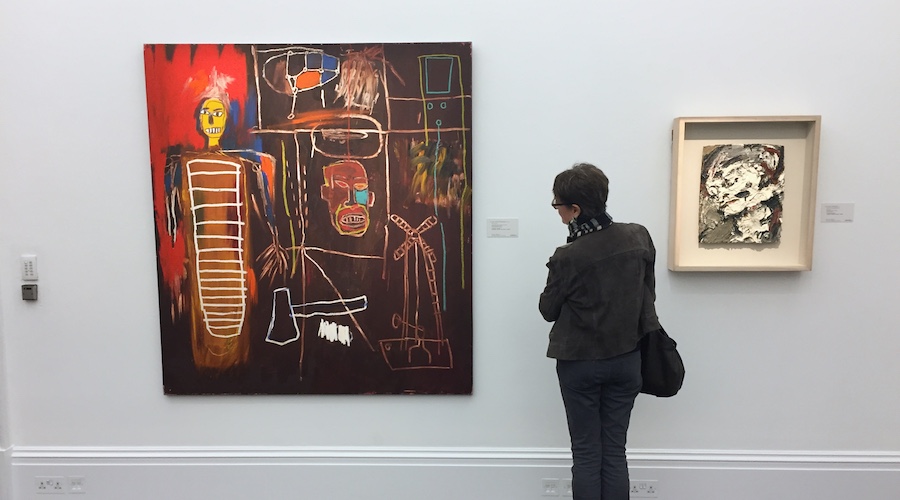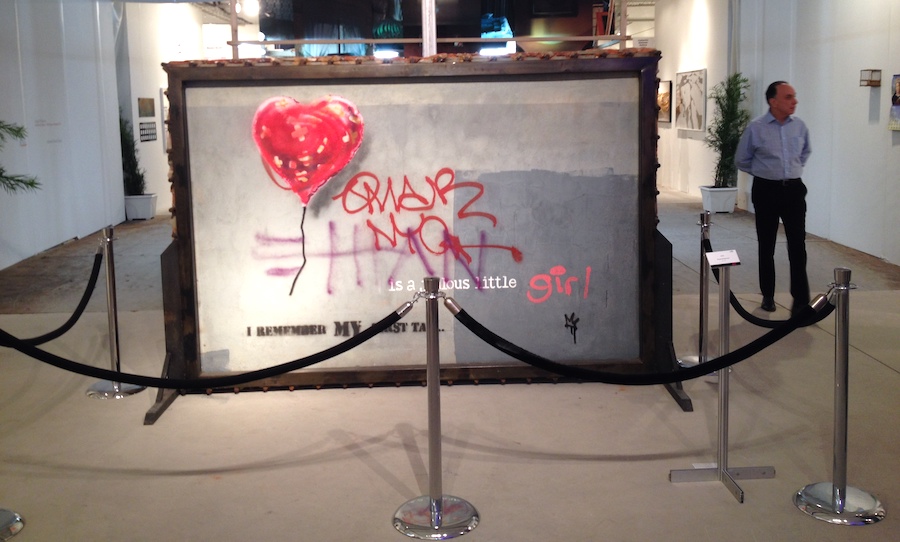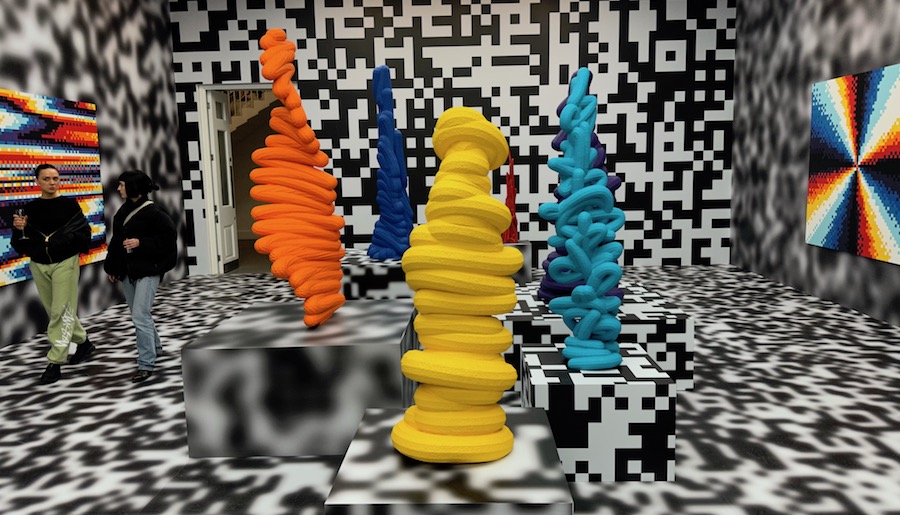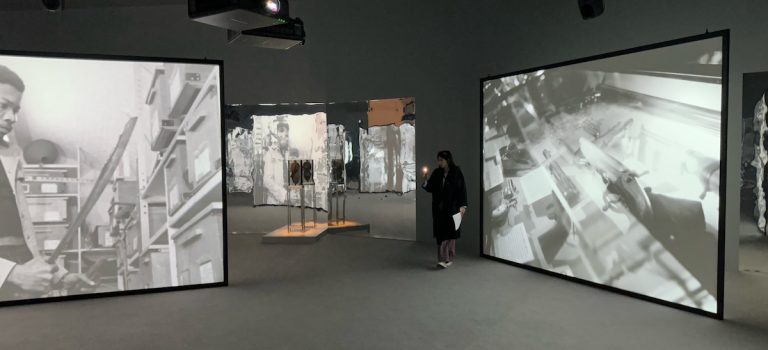Source: Artlyst.
Each generation has a diverse taste in art, influenced by unique experiences, cultural context, and technological advancements. Here’s an overview of the art of choice for each generation.
Baby boomers, born between 1946 and 1964, have been exposed to a wide range of visual art throughout their lives. However, several major art movements and styles have resonated particularly with this generation, including Pop Art and Abstract Expressionism. Generation X, born between the mid-1960s and early 1980s, collect or aspire to collect art influenced by cultural and artistic movements like the Neo Expressionism personified by Basquiat and Haring. Millennials, born roughly between the early 1980s and the early 2000s, embrace all forms of Street Art. Generation Z, born around the mid-1990s and early 2010s, has grown up in a highly digital and interconnected world. Technology, social media, and the changing landscape of visual culture heavily influence their art preferences.
It’s important to remember that these are general trends, and individual preferences within each generation can vary widely. Additionally, these art forms are not exclusive to a single generation, as there is often overlap and appreciation across different age groups.

Here Are Examples Of The Art Of Choice For Boomers:
Surrealism: Surrealism, with its dreamlike and imaginative qualities, had a lasting impact on the art world. Artists like Salvador Dalí and René Magritte created intriguing and thought-provoking works exploring the subconscious and challenging reality. Many baby boomers were drawn to the whimsical and fantastical elements of Surrealism.
Abstract Expressionism: Abstract Expressionism was a significant art movement in the post-World War II era. Artists like Jackson Pollock and Mark Rothko explored emotions, spontaneity, and the subconscious through their abstract paintings. This movement’s expressive and experimental nature resonated with baby boomers as they sought to challenge traditional norms.
Pop Art: Pop Art emerged in the 1950s and 1960s and was characterised by its use of vibrant colours, bold imagery, and popular culture references. Artists like Andy Warhol and Roy Lichtenstein gained significant popularity during this time, and their works, which often depicted celebrities and consumer products, appealed to the baby boomer generation.
Photorealism: Photorealism, which emerged in the late 1960s and early 1970s, sought to create highly detailed and realistic paintings that resembled photographs. This movement appealed to baby boomers as it combined technical skills with familiar subject matter, often depicting scenes from everyday life.
Land Art: Land Art, also known as Earth Art, emerged in the late 1960s and early 1970s. It involved creating artwork directly in the landscape, using natural materials like rocks, earth, and plants. Artists like Robert Smithson and Nancy Holt created large-scale, site-specific installations that engaged with the environment. The environmental consciousness of this movement resonated with baby boomers during a time of increased awareness about ecological issues.
These are just a few examples of visual art movements and styles popular among baby boomers. It’s important to note that individual preferences vary, and many baby boomers may also appreciate a wide range of other art forms, such as realism, impressionism, and modern sculpture.

Here are a few examples of the visual art of choice for Generation X:
Neo-Expressionism: Neo-Expressionism gained popularity in the 1980s and was characterised by its raw and emotive style. Artists like Jean-Michel Basquiat, Julian Schnabel, and Anselm Kiefer were prominent figures in this movement. Their works often featured bold brushstrokes, intense colours, and powerful imagery, reflecting the disillusionment and social commentary prevalent during that era.
Postmodernism: Generation X witnessed the rise of postmodernism, which challenged traditional notions of art, culture, and identity. Artists like Cindy Sherman, Barbara Kruger, and Jeff Koons embraced irony, appropriation, and cultural references in their works. Postmodern art often explores themes of consumerism, mass media, and the blurring of boundaries between high and low culture.
Graffiti and Street Art: Generation X witnessed the emergence of graffiti and street art as significant art forms. Artists like Keith Haring and Basquiat started their careers by creating art in public spaces, reflecting the time’s urban culture and countercultural movements. The rebellious nature and vibrant aesthetics of graffiti and street art resonated with many in Generation X.
Photography and Conceptual Art: Generation X has also shown a strong affinity for photography and conceptual art. Artists like Andreas Gursky, Cindy Sherman, and Sophie Calle have used photography to explore themes of identity, society, and personal narratives. With its focus on ideas and concepts rather than traditional artistic techniques, conceptual art has appealed to Generation X’s intellectual sensibilities.
Independent and Alternative Art Scenes: Generation X has embraced alternative and independent art scenes, often supporting local galleries, artist collectives, and DIY exhibitions. This generation has a penchant for seeking unconventional and underground art movements, such as installation, performance, and experimental video art.
It’s important to note that individual preferences within Generation X can vary widely, and these examples represent some of the art movements and styles that have resonated with this generation. Generation X’s diverse experiences and interests have resulted in a broad spectrum of visual art choices among its members.

Here Are Examples Of The Art Of Choice For Millennials:
Street Art and Graffiti: Street art and graffiti have captured the attention of many millennials. Artists like Banksy, Shepard Fairey, and Invader have gained significant recognition for their thought-provoking and visually striking works. Street art often addresses social and political issues, resonating with millennials’ interest in activism and urban culture.
Digital and New Media Art: Millennials have grown alongside rapid technological advancements and embraced digital and new media art forms. This includes art created using digital tools like digital painting, 3D modelling, and digital collage. Additionally, interactive installations, virtual reality experiences, and video art have gained popularity among millennials, who appreciate the fusion of art and technology.
Contemporary Illustration: Illustration has experienced a resurgence in popularity among millennials. Many illustrators have gained significant followings on social media platforms, sharing their unique styles and storytelling abilities. Illustrations often explore diverse themes, from personal experiences to social issues, and provide a visually engaging and accessible art form.
Conceptual Art: Conceptual art, which focuses on conveying ideas and concepts over traditional aesthetic considerations, has attracted the attention of millennials. This art form challenges conventional notions of art and invites viewers to think critically and engage intellectually. Artists like Damien Hirst and Yoko Ono are known for their conceptual works that provoke thought and spark conversations.
Artivism: Millennials have shown a strong interest in the intersection of art and activism. Artivism is using artistic expression to address social, political, and environmental issues. Many millennials are drawn to art with a purpose and message. This includes installations, performances, and public art to raise awareness and promote positive change.
It’s important to note that millennials, like any generation, have diverse interests and preferences regarding art. The examples mentioned above are just some art forms and movements that have gained popularity among millennials, but individual tastes can vary widely.

Here are a few examples of the visual art of choice for Generation Z:
Digital Art: Generation Z deeply appreciates digital art forms, as they have grown up with technology and the internet as integral parts of their lives. Digital painting, graphic design, 3D modelling, and animation are popular mediums in this generation. Online platforms and social media have provided spaces for young artists to showcase and share their digital creations. NFTs appeal to the Spotify generation. Bored Ape typifies the love of hype over the love of art history.
Memes and Internet Culture: Memes and Internet culture have become a significant aspect of Generation Z’s visual language. Memes are humorous images, videos, or texts that are shared and spread rapidly through social media. They often incorporate cultural references, humour, and social commentary. Memes have evolved into a unique visual communication and artistic expression for this generation.
Streetwear and Fashion: Generation Z is intensely interested in fashion and streetwear culture. Streetwear, characterised by its casual and urban aesthetic, draws inspiration from music, skateboarding, and hip-hop. Young artists and designers often collaborate with clothing brands, creating unique and limited-edition collections that merge art and fashion.
Minimalism and Simplicity: Generation Z appreciates minimalist and simplistic aesthetics. Clean lines, geometric shapes, and a focus on negative space are standard features in visual art choices. This preference for simplicity extends to other areas of design, including product design, interior design, and user interfaces.
Socially Conscious Art: Generation Z has shown a strong interest in art that addresses social and environmental issues. They are passionate about activism, equality, and sustainability. Art forms such as protest art, artivism, and art installations that raise awareness about important causes resonate deeply with this generation.
DIY and Handmade Art: Generation Z values handmade and DIY art despite being immersed in a digital world. They appreciate crafts, illustrations, zines, and other forms of art that showcase individual creativity and personal expression. This interest aligns with their desire for authenticity, uniqueness, and a break from mass-produced culture.
It’s important to note that Generation Z is incredibly diverse, and their art preferences can vary widely. The examples above represent some visual art forms and trends that have gained popularity among this generation, but individual tastes and interests may differ significantly.








